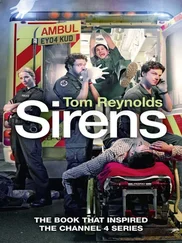‘I don’t care about that,’ said the GP, ‘I just want her to get TROP-I.’
(TROP-I is a special blood test to determine a heart attack.)
He then didn’t want to hear that sitting a woman out in the waiting room with a potentially life-threatening condition was, on reflection, a bad idea. I know GPs are busy, but is a two-year-old with an ear infection really more important?
I’m left in awe of GPs who don’t seem to want to treat anyone. Like nursing homes I’m sure I only meet/remember the rubbish ones. But if my mum was having a heart attack and went to the GP I’d be fuming if they sat her in the waiting room for an ambulance to arrive. It’s not hard to give someone an aspirin, it’s not hard to give them oxygen and it’s definitely not hard to keep an eye on them in your examining room while you wait the (less than) eight minutes it takes for an ambulance to arrive.
I’ve mentioned before how the LAS will visit and help train rubbish care homes—I’m beginning to wonder if we should also go to GPs and let them know what the ambulance service (and by extension the local A&E departments) expect.
I’m not aiming to annoy GPs, but the day after the ‘heart attack in the waiting room’ I went to another case where the GP was less than helpful.
It sounded like one of our ‘crap’ calls: ‘six-year-old female, losing weight, tired’, not what you’d mark down as needing an emergency service.
The ill child was very thin, and her concerned parents told us that she had been losing weight for the past couple of weeks. She was lethargic, wasn’t eating well (she was mainly drinking a lot of fizzy drinks) and had been having spells of dizziness. To my eye the child did look rather unwell.
The father had taken her to the GP earlier in the week, and the GP had told him that he was ‘wasting his time’ and that the child would soon put the weight back on. The father asked for the child to be sent to the hospital, and the GP refused this.
We got the child into the ambulance and starting running our tests.
Her pulse was normal, as were her blood pressure and oxygen levels.
Her blood sugar was not normal. It was above 33 mmols (which is, I think, around 660 dg/l). The normal value is around 5 mmols.
The child was (almost certainly) an undiagnosed diabetic.
In my ‘big book of how to tell what might be wrong with someone’ there are six probable causes for severe long-term weight loss. They are Malignancy, Depression, Thyrotoxicosis, Uncontrolled Diabetes, Infection and Addison’s Disease. Within minutes of meeting this child for the first time, we had a provisional diagnosis.
It’s not hard to do a blood sugar test in a GP surgery; it takes less than 30 seconds.
So why did the GP tell the parent to go away? Was it because the GP was so busy trying to fill the government’s targets? Or was it the case that the GP considers severe weight loss in six-year-old girls a ‘phase’ that they will grow out of?
However, now I realise why the ambulance service is doing diabetes screening.
When the weather is nice, a polite 90-year-old woman who has drunk a bit too much wine and has fallen over can be a very endearing patient.
Since I am feeling (and to be more honest looking) fat I’ve decided to take up cycling again. I’m sure that I gave a great amount of joy to anyone who saw this particular tubby man puffing and panting against the wind while cycling along at 1 mph. Still, if I want to stop from looking six months pregnant I need to start some exercise. Another reason is a job I did yesterday.
We were sent to a strange call. It was given as ‘Elderly woman lying on the green as you enter Kellett Road. Woman may have got up.’
Rushing to the green we found it empty. So we decamped from the ambulance, grabbed our bags and went for a little wander to see if the patient was hiding in a dip in the ground. Across the green, near some houses, some people started waving at us so we trotted over.
The patient was a very elderly woman. She was wearing a nightdress, a threadbare cardigan and nothing on her legs. She was also barefoot—I was surprised that the thin skin on her feet hadn’t been torn apart by the pavement.
The temperature, not taking into account the strong windchill factor, was around 1° Celsius.
She was—unsurprisingly—a bit blue and she felt like a block of ice.
We only had our medical equipment with us; we didn’t have a blanket so I took off my fleece and wrapped it around her before running back to the ambulance to bring it closer to the patient.
I was shocked by how out of breath I was after jogging about 150 yards. Twenty-four hours later and my ankles were still in pain.
I brought the ambulance closer and we bundled the patient into the back, turned the heating on full and wrapped her in our blankets. The patient was one of those little old ladies that you would want to give a good cuddle to if she were your gran. We had a short and uneventful trip to the hospital where she was soon receiving the attention of the nursing staff.
My crewmate filled in a ‘vulnerable adult’ form, which means that the social services will get involved so that the patient will (hopefully) get any long-term care that she needs.
I managed to get my fleece back.
It now smells of granny wee.
It’s in the washing machine as I type this.
More Madness in East London
We were called to a fourth-floor flat in one of the many housing blocks in the east of London where we found an unkempt man in his forties pacing back and forth along the access balcony to his flat.
He wasn’t wearing any shoes, socks or a shirt, and his trousers and pants were falling off him.
While he paced he was muttering about God and the Devil.
The patient obviously had mental health issues, but we also suspected something else was causing this behaviour. At one point he made to throw himself over the balcony. We stood in his way to prevent him doing this, and more importantly to stop him making us go through the, frankly hard, work of trying to save his life in the face of major trauma.
As we led him back into his flat to get some shoes/clothes we realised that the reason why he was behaving so strangely might have been exacerbated by drug use. We nearly tripped over an empty bottle of methadone.
The flat was—as I’ve mentioned before—exactly how you would expect a drug den to look. There was drug paraphernalia strewn around the place, mattresses on the floor and the heavy curtains looked like they had never been drawn.
The patient continued to pace around while occasionally becoming quite agitated. While we didn’t think that he would become violent we were still rather wary of getting too close to him or letting our guard down.
After half an hour we had managed to get him dressed and were able to lead him downstairs where we ‘ahem’ ‘gently’ got him into the ambulance.
While I drove us to the hospital my crewmate did his best to keep the patient calm. We pre-warned the hospital that they would need security and the secure room ready for us. Unfortunately, the hospital switchboard wasn’t picking up the phone so there was no one there to meet us when we rolled up outside the A&E doors.
At one point he exposed his genitals to my crewmate.
A bit of a struggle began where the patient wanted to jump off the ambulance and run away, so my crewmate and I ended up restraining him until security arrived to help drag him into the department’s ‘padded room’.
Читать дальше












